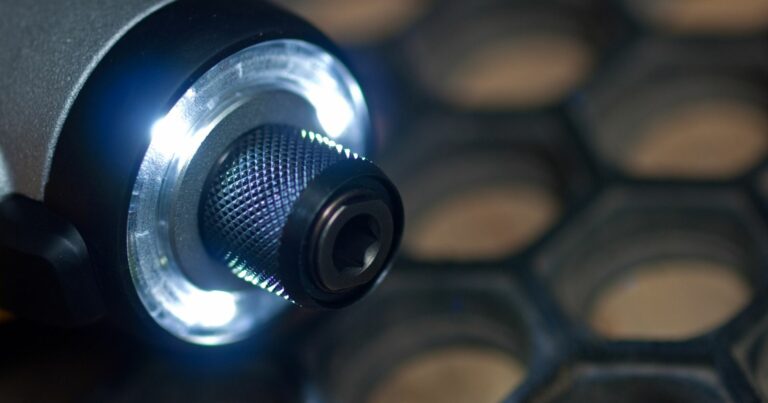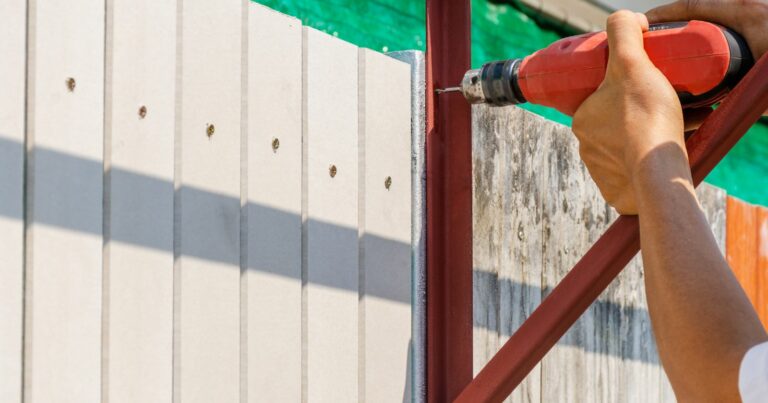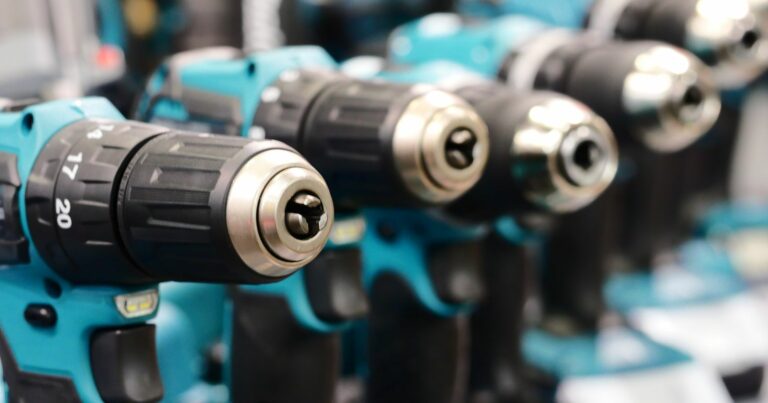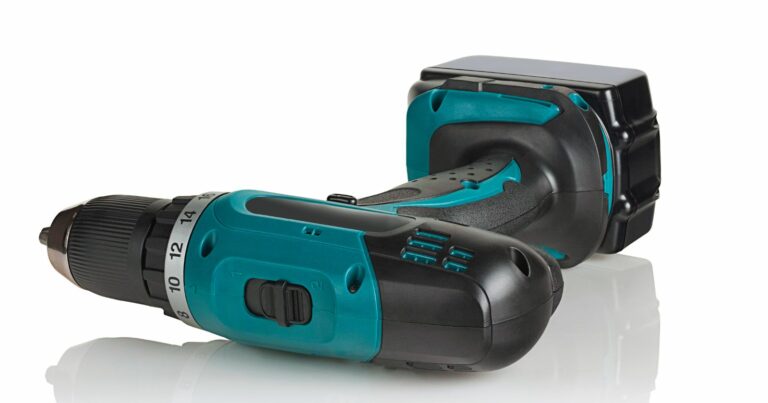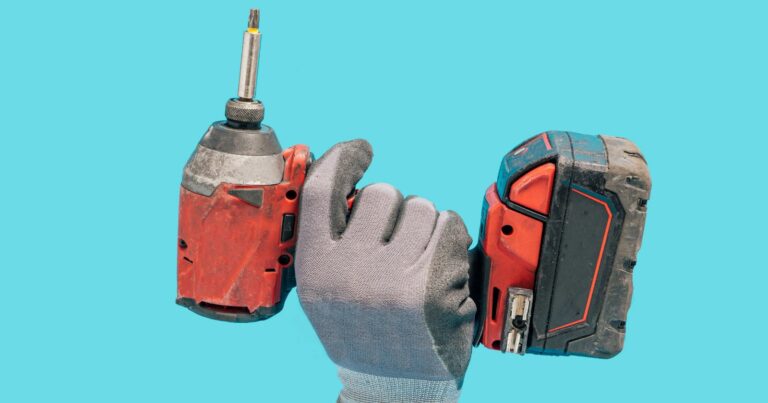8 Common Impact Driver Features And Their Benefits
When you’re tackling home repair projects, having the right power tools can make all the difference in the world. An impact driver, often favored by DIY enthusiasts, is a potent tool that stands out due to its unique impact driver features designed to make your work more efficient and less exhausting. Understanding what an impact driver offers will help you decide whether it’s the right addition to your toolkit.

An impact driver is engineered to deliver a high level of torque, meaning you can drive screws and fasteners into difficult materials with relative ease. This tool is specifically beneficial if you’re working with long screws or dense materials that would challenge a standard drill. The internal mechanism delivers rotational impacts, which help to drive screws faster and reduce the chances of the bit slipping, preventing damage to the screw head or the surface you’re working on.
Another key benefit of an impact driver is its compact and lightweight nature, allowing you to maneuver in tight spaces without user fatigue. With improvements such as one-handed bit changes and LED lights to illuminate the work area, this tool is not just about raw power, it’s also about precision and user convenience. Whether you’re building a deck, assembling furniture, or creating custom shelving, an impact driver can prove to be an invaluable ally in your DIY endeavors.
Understanding Impact Drivers

When seeking a high-torque, efficient power tool for driving screws and bolts, impact drivers stand out as indispensable in both DIY and professional settings.
Mechanisms of Impact Drivers
Impact drivers are engineered to deliver high torque with minimal exertion from the user. Unlike regular drills, an impact driver combines both rotational force and hammering action to drive screws. The anvil and hammer mechanism inside an impact driver exerts force perpendicular to the bit, which translates to less recoil and more precision in driving fasteners into hard materials like metal or hardwood.
Impact Driver vs. Drill Comparison
An impact driver differs from a standard drill in several ways. With a higher torque output, an impact driver excels at driving screws and bolts quickly and efficiently. Drills are better suited for drilling holes and are often equipped with a keyless chuck, making them versatile for different bit types. Impact drivers have a hexagonal shank or collet that accepts hex-shanked bits, providing a firmer grip and reducing slippage.
- Drill: Ideal for precision drilling, variable bit use, less torque
- Impact Driver: High torque for driving screws, hex bit compatible, faster application
Key Specifications of Impact Drivers
When choosing an impact driver, consider the specifications that affect performance and usability:
- Torque: Measured in inch-pounds, a higher torque indicates more driving power.
- Speed: RPM (rotations per minute) and IPM (impacts per minute) show the tool’s speed and impact frequency.
- Weight: A lighter tool reduces fatigue, important for extended use.
- Voltage: Determines the power of the cordless impact driver, with higher voltages offering more robust performance.
- Battery Life: Vital for cordless models, impacts the tool’s operational time between charges.
- Additional Features: Built-in LED lights, belt hooks for portability, brushless motors for efficiency, and variable speed triggers for control over the speed under load.
By understanding these core aspects, you can choose the right impact driver to enhance your tool collection and tackle projects more effectively.
Watch This Video And Learn About 8 Common Impact Driver Features And Their Benefits
Practical Applications and Projects
Impact drivers are versatile tools that excel in a range of tasks from assembling furniture to constructing a deck. Their key benefit lies in the ability to efficiently drive screws and bolts into various materials with precision and speed.
Impact Drivers in DIY
If you’re a DIY enthusiast, your impact driver is your partner for countless projects. When building a deck, you’ll find that the high torque output of an impact driver makes it perfect for driving large, long fasteners into wood. The tool’s concussive blows ensure that screws are driven home without stripping the head or splintering your material.
Industrial Uses of Impact Drivers
In the industrial setting, impact drivers play a crucial role. They are commonly used to secure heavy-duty bolts and fasteners in large structures. Their efficiency and power mean you can undertake repetitive tasks with less fatigue and time.
Home Repair and Maintenance
For your house repair tasks, an impact driver is indispensable. Whether you are fixing cabinets in the garage or replacing hinges on a door, the impact driver provides the torque you need without straining your wrist. Its compact size allows for ease of use in tight spaces typically found around the home.
Remember, when working with fasteners, always choose the correct bit size for your project to reduce the risk of stripping the screw head or damaging your tool.
Selecting the Right Impact Driver
When choosing the right impact driver for your needs, consider the tool’s torque, size, weight, and voltage. Specific features like LED lights and noise level can also impact your user experience.
Impact Driver Features
Torque: This is the impact driver’s turning force, and higher torque means more driving power for screws and bolts. Look for an impact driver with at least 1,350 to 2,250 inch-pounds of torque if you’re tackling demanding jobs.
Size and Weight: A compact size and lightweight design can increase comfort and reduce fatigue. Cordless impact drivers are particularly handy for this reason.
Voltage: Impact drivers come in various voltages, with 12V models being lighter and more maneuverable and 18V or 20V models offering more power for heavy-duty tasks.
Noise: Impact drivers are noisy tools, but some models come with noise reduction features for more comfortable use.
LED Light: An LED light can illuminate your workspace, making it easier to see what you’re doing.
Hex Bits: Be sure to choose an impact driver that accepts standard hex bits for convenient bit changes.
Unique Features: Some impact drivers include features like speed selection to match the speed to the task, which can be beneficial.
Combo Kit: If you’re starting from scratch, consider buying a combo kit that includes an impact driver, batteries, and a charger. Some kits even come with a traditional drill.

Comparing Brands and Models
Price: Set a budget but remember that the cheapest options may not always offer the best value. Look for a balance between cost and the features you need.
Warranty: Look for impact drivers with a solid warranty. Brands like DeWalt, and Ryobi often provide good warranty coverage that can give you peace of mind.
Brand: Established brands may offer better build quality, more advanced features, and better customer support. However, don’t discount newer brands that may provide competitive features at a more approachable price point.
Remember, the right impact driver will fit comfortably in your toolbox and hand. It should meet the demands of your projects while offering features that make your work more efficient and comfortable.


